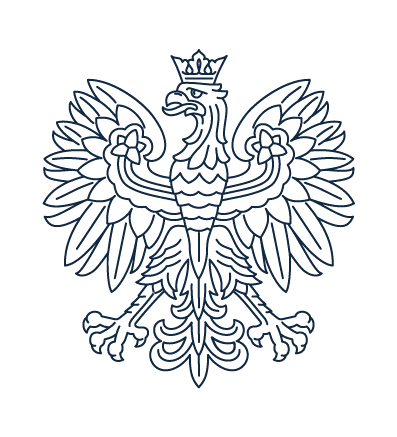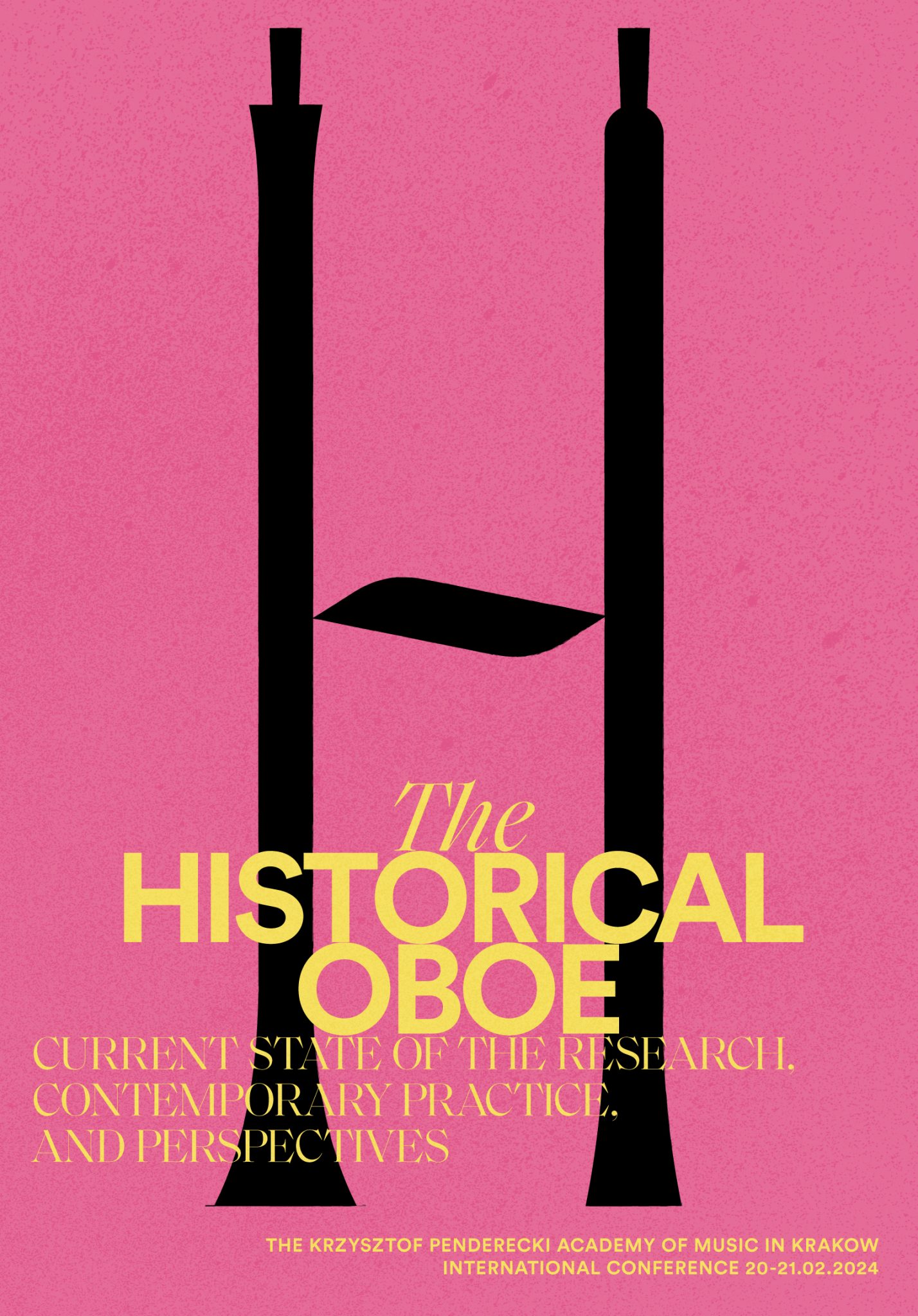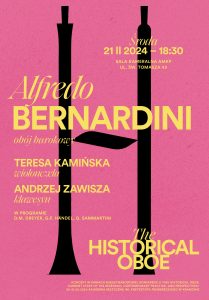Międzynarodowa konferencja „Obój historyczny: stan badań, współczesna praktyka oraz perspektywy” | 20-21.02.2024
Rejestracja | Program | Koncert | Prelegenci | Abstrakty
Akademia Muzyczna im. Krzysztofa Pendereckiego w Krakowie zaprasza na międzynarodową konferencję poświęconą obojom historycznym: “Obój historyczny: stan badań, współczesna praktyka oraz perspektywy”.
W skład komitetu naukowego wchodzą dwaj znakomici oboiści historyczni i badacze: Prof. Alfredo Bernardini (Universität Mozarteum Salzburg) oraz dr Geoffrey Burgess (University of Rochester, USA; International Double Reed Society, redaktor “The Double Reed”). Ze strony Akademii Muzycznej im. Krzysztofa Pendereckiego w Krakowie w skład komitetu naukowego wchodzi dr Katarzyna Pilipiuk, która jest również kierownikiem projektu.
Podczas konferencji referaty zaprezentują badacze z całego świata. Będzie to wydarzenie jedyne w swoim rodzaju, skupione na rozwoju oboju od jego powstania do czasów dzisiejszych. Na te dwa dni Kraków stanie się miejscem prezentacji najnowszych odkryć badaczy stylu, muzykologów, instrumentalistów, instrumentologów, teoretyków i praktyków.
Konferencja będzie dwujęzyczna. Referaty w języku angielskim będą tłumaczone na język polski, a referaty w języku polskim – na język angielski. Tłumaczenia można będzie słuchać zarówno uczestnicząc na żywo, jak i on-line.
W programie nie zabraknie również koncertu – w środę 21 lutego o 18:30 odbędzie się recital mistrzowski Alfreda Bernardiniego.
ZGŁOSZENIA UCZESTNICTWA
Zapraszamy wszystkich zainteresowanych do udziału w konferencji na miejscu bądź on-line na specjalnej platformie konferencyjnej. Transmisja obejmuje całość konferencji. Rejestracja uczestników jest całkowicie darmowa i dostępna dla wszystkich. Uczestnicy bierni będą mogli słuchać konferencji bezpłatnie – na żywo bądź on-line.
Jak uzyskać login i hasło? Należy do 19.02.2024 wysłać e-mail na adres historical.oboe.conference@amuz.krakow.pl.
OGŁOSZENIE O NABORZE REFERATÓW
Termin zgłaszania propozycji upłynął 18 grudnia 2023 r.
Akademia Muzyczna im. Krzysztofa Pendereckiego w Krakowie ogłasza nabór referatów do międzynarodowej konferencji „Obój historyczny: stan badań, współczesna praktyka oraz perspektywy”, która odbędzie się w Akademii Muzycznej im. Krzysztofa Pendereckiego w Krakowie, ul. św. Tomasza 43, 31-027 Kraków, w dniach 20-21 lutego 2024.
Naszym celem jest wymiana wiedzy między pochodzącymi z całego świata ekspertami w dziedzinie instrumentologii, budowania instrumentów, wykonawstwa, muzykologii oraz historycznych praktyk wykonawczych.
Uczestnicy wygłaszający referaty mogą je wygłosić na żywo, w Krakowie, dopuszcza się również możliwość prezentacji on-line. Cały przebieg konferencji będzie transmitowany on-line dla zarejestrowanych uczestników oraz słuchaczy.
Komitet naukowy:
- Prof. Alfredo Bernardini (Universität Mozarteum, Salzburg)
- Dr Geoffrey Burgess (University of Rochester,USA; International Double Reed Society, redaktor czasopisma“The Double Reed”)
- Dr Katarzyna Pilipiuk (Akademia Muzyczna im. Krzysztofa Pendereckiego w Krakowie)
Komitet naukowy ogłasza nabór referatów poruszających następujące tematy:
– historia oboju
– informacje dotyczące instrumentalistów (oboistów) z XVII-XIX wieku
– społeczne oraz historyczne tło wykonawstwa obojowego minionych epok
– repertuar dla oboju historycznego
– instrumentologiczne badania zachowanych instrumentów historycznych
– rekonstrukcja dawnych obojów
– obecny stan historycznie poinformowanego wykonawstwa w grze na oboju
– muzyka współczesna (XX-XXI w.) na obój historyczny
Forma prezentacji:
Ustny referat (20 minut, z dodatkiem 10 minut na ewentualną dyskusję i pytania) w języku polskim lub angielskim.
Oficjalnym językiem konferencji jest język angielski.
Komitet naukowy dokona wyboru referatów na podstawie przedstawionych abstraktów.
ZGŁOSZENIA REFERATÓW
Propozycje należy wysyłać na adres e-mail: katarzyna.pilipiuk@amuz.krakow.pl
Propozycja powinna zawierać:
- Imię i nazwisko
- Afiliację
- Adres e-mail
- Tytuł referatu
- Abstrakt (do 500 słów)
- Krótką biografię autora (do 100 słów)
Termin zgłaszania propozycji upływa 18 grudnia 2023 r.
Informacje o akceptacji referatów zostaną ogłoszone przed 31 grudnia 2023 r.
OPŁATA KONFERENCYJNA DLA PRELEGENTÓW
Opłatę konferencyjną w wysokości 500 PLN należy przesłać po informacji o zaakceptowaniu referatu na konto Akademii Muzycznej im. Krzysztofa Pendereckiego w Krakowie do 31.01.2024 r.
Bank PEKAO SA, III Oddział Kraków
IBAN: PL 41 1240 2294 1111 0000 3708 8240
BIC/SWIFT: PKOPPLPW
Jako tytuł przelewu należy wpisać: The historical oboe conference fee
HARMONOGRAM
Czas środkowoeuropejski (CET) – UTC/GMT+1
Konferencja będzie dwujęzyczna – polsko-angielska.
Tłumaczenia można będzie słuchać zarówno uczestnicząc na żywo, jak i on-line.
Wtorek 20 lutego 2024
Sala Kameralna AMKP
ul. św. Tomasza 43
10:00-10:30 Opening speech
Prof. Alfredo Bernardini, Dr Geoffrey Burgess, Dr Katarzyna Pilipiuk
10:30-11:00 Prof. Alfredo Bernardini (Universität Mozarteum Salzburg, Austria) “Domenico Maria Dreyer and his 6 Oboe Sonatas”
11:00-11:30 Prof. Janice B. Stockigt (University of Melbourne, Australia) “Oboists at the Dresden Court of August II (1709–1733) during the Polish–Saxon Union” (on-line)
11:30-12:00 Coffee break
***
12:00-12:30 Robert de Bree (The Royal Conservatoire of The Hague) “The Improvising 19th Century Oboist – Pedagogical Puzzle Pieces in Methods and Repertoire”
12:30-13:00 Jan Hutek “The Oboe in Warsaw in 19th century. Oboists, teaching and repertoire prior 1914”
13:00-13:30 Dr Marek Niewiedział (The Ignacy Jan Paderewski Academy of Music in Poznań, Poland) “The peculiar maestro or Joseph Triebensee as a virtuoso, arranger, composer, manager and singer”
13:30-15:30 Lunch break
15:30-16:00 Dr Katarzyna Pilipiuk (The Krzysztof Penderecki Academy of Music in Kraków, Poland) “Oboe Players in Poland in the 18th Century”
16:00-16:30 Prof. Stefaan Verdegem (Koninklijk Conservatorium Brussels, Belgium) “The Bach Oboe reconsidered”
16:30-17:00 Michael Finkelman “The Lower Oboes, Genesis and Development: A Capsule Introduction” (on-line)
Środa 21 lutego 2024
Sala Kameralna AMKP
ul. św. Tomasza 43
10:00-10:30 Christine Blasl “Berlin after 1730 – Showing developments in instrumental music through
oboe sonatas”
10:30-11:00 Dr Christopher Palameta (Royal Academy of Music, London, UK; Sibelius Academy, Helsinki University of the Arts, Finland) “Berlioz’s Lost Oboe: Exploring the Forgotten Last Generation of the Simple-System Oboe in France”
11:00-11:30 Coffee break
***
11:30-12:00 Dr Kostis Hassiotis (University of Macedonia, Greece, Department of Music Science and Art; Director of the Wind Ensemble Laboratory) “Franz Wilhelm Ferling (1796–1874) and his 48 Studies for Oboe op. 31: a review and reevaluation of the surviving sources with implications on performance”
12:00-12:30 Dr Geoffrey Burgess (University of Rochester, USA; International Double Reed Society, editor of “The Double Reed”) “Carl Theodore Golde and Oboe Manufacture in mid-19th-century Dresden”
12:30 Panel discussion
13:30 Banquet
*** KONCERT ***
Środa 21 lutego 2024, 18:30
Sala Kameralna AMKP
ul. św. Tomasza 43
Recital mistrzowski Alfredo Bernardiniego
GEORG FRIEDRICH HANDEL (1685-1759): Sonata in F major HWV 363a
adagio – allegro – adagio – bourée angloise – menuetto
DOMENICO MARIA DREYER (1701-1735): Sonata op.5 n.1 in e minor
adagio sostenuto, a tempo cantabile – allegro – adagio – allegro
GIUSEPPE SAMMARTINI (1695-1750): Sonata in sol maggiore n.1
adagio ad libitum – allegro assai – minuet, andante, minuet da capo
DOMENICO MARIA DREYER: Sonata n.6 in a minor
adagio – allegro – siciliana – allegro
Alfredo Bernardini obój barokowy
Teresa Kamińska wiolonczela barokowa
Andrzej Zawisza klawesyn
PRELEGENCI
alfabetycznie
PROF. ALFREDO BERNARDINI
Universität Mozarteum Salzburg, Austria
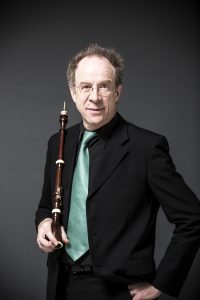
Born in Rome in 1961, Alfredo Bernardini moved to the Netherlands in 1981 to specialize in baroque oboe and early music with, among others, Bruce Haynes and Ku Ebbinge. In 1987 he received his soloist diploma from the Royal Conservatory of The Hague. In 1985 he was a member of the European Union Baroque Orchestra in its first year of existence. He has since performed all over Europe, in Russia, the USA, Canada, Japan, China, Korea, Malaysia, Egypt, Israel, South America and Australia as a member of prestigious baroque ensembles such as Hesperion XX, Le Concert des Nations, La Petite Bande, The Amsterdam Baroque Orchestra, Das Freiburger Barockorchester, The English Concert, Bach Collegium Japan, Balthasar Neumann Ensemble and others. He has played in more than 100 recordings. In 1989, he founded the ensemble ZEFIRO together with the brothers Paolo and Alberto Grazzi. His recordings with Zefiro have won important prizes such as the Cannes Classical Award and the Diapason d’Or de l’Année 2009. As a director, he has worked with orchestras in Italy, France, Germany, Spain, Portugal, Belgium, the Netherlands, Ireland, Denmark, Norway, Poland, the UK, Sweden, Canada, Cuba, Australia, Israel and with the European Union Baroque Orchestra.
In January 2013 he was a counsellor and director of the first baroque orchestra project of “El Sistema de Musica” of Venezuela. Since 2016 he is a regular conductor of the international youth orchestra Theresia specialising in classical repertoire. From 2018 to 2023 he was appointed the director of a revival project of the operas by Johann Josef Fux by the Styriarte Festival of Graz. His research on the history of woodwind musical instruments has resulted in several articles published by important international magazines. From 1992 to 2015 he taught baroque oboe at the Conservatory of Amsterdam and since 2014 he is a professor at the Mozarteum University of Salzburg, and from 2002 to 2009 he taught at the Escola Superior de Musica de Cataluña in Barcelona. He has also been a guest teacher in music academies and during summer courses in Italy, France, Spain, Portugal, Germany, Austria, Denmark, Israel, Australia, Canada, Venezuela, Cuba and the USA.
CHRISTINE BLASL
Christine Blasl is a historical woodwind player and studied recorder with Andreas Böhlen and baroque oboe with Amy Power, Josep Domenech Lafont and Andreas Helm. Through her artistic-scientific studies she specializes in the Northern Italian diminutions of the Renaissance and also the empfindsame Stil around the Berlin court. She worked at the Institute for Early Music of the University of Music and Performing Arts Graz, but now lives in the Netherlands and plays with numerous ensembles throughout Europe. Next to her concert activities, she teaches in private summer courses in Italy and France and gives recorder lessons for amateurs and enthusiasts. She is also an independent tutor for supporting students in writing their scientific papers.
DR GEOFFREY BURGESS
University of Rochester, USA; International Double Reed Society, editor of “The Double Reed”
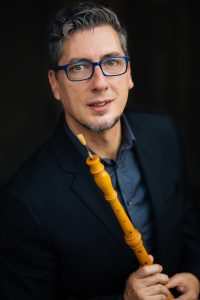
Internationally renowned Baroque oboist and musicologist, Geoffrey Burgess performed with Les Arts Florissants for 20 years, and as soloist with the Washington Bach Consort, Philadelphia Bach Collegium, The Brandenburg Orchestra of Australia, and Trinity Wall Street, (NY). Geoffrey has been instructor in Baroque oboe at Eastman for 15 years, and serves as the Oboe Editor of the International Double Reed Society. As well as being co-author with Bruce Haynes of the standard work on the oboe in the English language — The Oboe (Yales UP, 2004) — Dr. Burgess has published numerous articles and books on music history and interpretation. His latest publication is a historical novel based on the life of Bach’s oboist, The Thorn of the Honey Locust.
ROBERT DE BREE
The Royal Conservatoire of The Hague, The Netherlands
Robert de Bree is a historical oboist, recorder player, improviser and lecturer. He teaches historical improvisation at the Royal Conservatoire of The Hague. This year Robert taught workshops at conservatoires in Katowice, Riga, Frankfurt and Vienna. He presented lectures for amongst others Early Music America, REMA and received a year-long grant from the Festival de Musique Improvisée de Lausanne for his improvisation research. Robert combines performing in top ensembles in the Early Music world (such as English Baroque Soloists and Pygmalion) with his own creative endeavours, such as The Scroll Ensemble which improvises entire concerts in historical styles.
MICHAEL FINKELMAN
Michael Finkelman – oboe study with several members of The Philadelphia Orchestra; B.A. (Music History and Literature), Marlboro College; M.A. (Music History and Literature), Antioch University International; M.L.S., State University of New York. Academic music research librarian and historian of 50 years’ experience. Numerous publications, largely in “The Double Reed”; 300 Years of Music for the Lower Oboes (bibliography-discography, 768pp. Boston, 2020). Author of the lower oboe articles in the New Grove Dictionary, The New Grove Dictionary of Musical Instruments and Die Musik in Geschichte und Gegenwart.
KOSTIS HASSIOTIS
Kostis Hassiotis studied oboe in Greece, Germany and the UK. He has performed in Greece, Germany, Cyprus, Spain, England and the USA as a soloist, and has presented in international Conferences (London, 2012, 2015; Thessaloniki, 2012; Granada, 2018). He is invited for masterclasses, concerts and lectures (Sweden, 2014; Spain, 2019, 2024; the USA, 2016, 2017). He is Professor at the Department of Music Science and Art and Director of the Wind Ensemble Laboratory. His research interests include: practicing and rehearsing techniques for wind ensembles; the impact of historical and modern scientific research on music performance and pedagogy; historically-informed performance; and critical editing of music works.
JAN HUTEK
Jan Hutek Studied historical oboes with Rafael Gabriel Przybyła at the Grażyna i Kiejstut Bacewicz Academy of Music in Łódź (2010-2012) and with Katharina Spreckelsen at the Royal Academy of Music in London where in 2014 his was awarded the Distinction Master of Arts degree and the DipRAM award. In 2014, Jan was touring with EUBO and in 2016 he was awarded a place on Orchestra of the Age of Enlightenment Experience scheme. From 2017 he is a member of Musicae Antiquae Collegium Varsoviense – period instruments orchestra of Warsaw Chamber Opera. He also performs and records with other period instruments ensembles in Poland and abroad. In 2014 his article „Oboe ensembles in the 17th and 18th centuries – the origin, development and repertoire” was published in academic-art semi-annual publication of the Academy of Music in Łódź.
DR MAREK NIEWIEDZIAŁ
The Ignacy Jan Paderewski Academy of Music in Poznań, Poland
One of the first oboists in Poland, professionally involved in playing historical oboes. Concerting soloist, chamber musician, orchestral musician and active propagator of early music, as well as an organizer of various artistic activities.
A graduate of the Academy of Music in Poznań in the oboe class of prof. Mieczysław Koczorowski, the Royal Conservatory in The Hague in the class of baroque and classical oboe Ku Ebbinge and the Hochschule für Musik und Theater in Leipzig in the class of Wolfgang Kube. He graduated with honors from Postgraduate Studies of Cultural Managers at the Warsaw School of Economics. In 1996, he was awarded the Poznań City Councilors’ Prize for artistic achievements, and in 2002, the Zofia Rayzacherowa for the greatest artistic individuality in the field of early music.
Since 1998, he has been cooperating with the Warsaw Chamber Opera as the first oboist and coordinator of the Musicae Antiquae Collegium Varsoviense orchestra. In 2020, he founded the Warsaw Harmony ensemble, with which he presents 18th and 19th-century works for wind instruments. Moreover, he collaborates with most orchestras and early music ensembles in Poland. Among foreign formations, it is worth mentioning: Akademie für Alte Musik Berlin, Musica Florea Prague, Collegium Marianum Prague and Ensemble Inegal from Prague. He is the artistic director of the Varmia Musica festival and the Varmia Musica Academia music workshops in Lidzbark Warmiński. He teaches the baroque oboe class at the Academy of Music in Poznań.
DR CHRISTOPHER PALAMETA
Royal Academy of Music, London, UK
Sibelius Academy, Helsinki University of the Arts, Finland
Dr. Christopher Palameta is a historical oboist, musicologist, researcher and teacher at the Sibelius Academy (Helsinki University of the Arts). He performs with many of Europe’s finest period ensembles, with whom he has recorded over 70 discs for various international labels. An ardent defender of unexplored repertoire for the oboe, his solo discography includes numerous world-premiere recordings. A recipient of several research grants from the Canada Council for the Arts and the Conseil des arts et des lettres du Québec, he took his graduate degree from McGill University and completed his PhD in Musicology at the Royal Academy of Music in London, where his research on the oboe under Berlioz was supported by the Maple Leaf Trust (Canadian Centennial Fund).
Dr Kostis Hassiotis (University of Macedonia Greece, Department of Music Science and Art; Director of the Wind Ensemble Laboratory) “Franz Wilhelm Ferling (1796–1874) and his 48 Studies for Oboe op. 31: a review and reevaluation of the surviving sources with implications on performance”.
DR KATARZYNA PILIPIUK
The Krzysztof Penderecki Academy of Music in Kraków, Poland
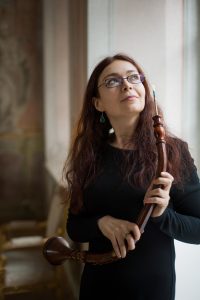
Katarzyna Pilipiuk studied historical oboes with Marek Niewiedział, Frank de Bruine and Alfredo Bernardini. She performs 18th and 19th century music using copies of baroque and classical oboes and also 19th century music on original instruments. Katarzyna cooperates with many early music ensembles in Poland and Europe. She played with Royal Baroque Ensemble, Filatura di Musica, Polska Orkiestra XVIII Wieku, Concerto Polacco, Famd.pl, Il Tempo, Diletto, Risonanza, Arte dei Suonatori, Goldberg Baroque Ensemble, Cappella di Ospedale della Pieta, Barockorchester Concerto München, Salzburger Bachgesellschaft, Orchestra of the Eighteenth Century, L’arpa Festante. She took part in the Fireworks European Tour with Ensemble Zefiro. She is one of the members of Il Vento early music ensemble, which is very active in Poland. Katarzyna is also artistic director of Festiwal Muzyczny im. Leopolda hr. Poletyły in Krasnystaw – an event devoted to the historically informed performance of late 18th and romantic music.
Besides early music, Katarzyna also often experiments with contemporary music using early instruments. She has made some premiere performances and recordings of modern pieces. She is passionate about researching the history of the oboe, analysing the transformation of its construction and discovering forgotten repertoire. Her Ph.D. research dealt with oboe in Poland in the eighteenth century. Currently she is leading the baroque oboe class at The Krzysztof Penderecki Music Academy in Kraków, Poland.
PROF. JANICE STOCKIGT
Associate Professor (Honorary Principal Fellow) at Melbourne Conservatorium of Music, Faculty of Fine Arts and Music, The University of Melbourne, Australia
ABSTRAKTY
chronologicznie
Speaker: Prof. Alfredo Bernardini (Austria)
Title: “Domenico Maria Dreyer and his 6 Oboe Sonatas”
Abstract: The Six “Sonate da camera a oboe solo col suo basso” by Domenico Maria Dreyer.
A manuscript with these sonatas by Dreyer is preserved at the Bibliothèque National de Paris. This might be a copy of the lost printed edition of the “Sonate per Camera, e Obuè solo col suo basso continuo, per il Violoncello, ò Clavicembalo di Domenico Maria Dreyer, op.1” found in the catalogue of Silvani from Bologna dated 1727. New research sheds light on the life of this oboist composer. Domenico Dreyer was born in Florence in 1701 from a German father and an Italian mother. His brother Giovanni Filippo Maria was a successful castrato singer, who also performed in operas by and with Vivaldi in Rome, Prague and maybe also Venice and Breslau. The two brother were engaged by the court of St.Petersburg in 1731 and in the next years they were also appointed to find and bring other Italian musicians to that court. At the end of 1735 Domenico Dreyer died in an unspecified “terrible event” and his brother Giovanni hurried to return to Florence and locked himself in a convent where he wrote music for the church until his death in 1772.
Dreyer’s sonatas for oboe are typical for their time and place, with their contrasting four movements between fast virtuosity and expressive cantabile, they require more than the full range of the oboe of the early 18th Century: even one e3 and one c#1 can be found. Furthermore, the resemblance with some themes by Antonio Vivaldi is striking and suspicious.
Speaker: Prof. Janice B. Stockigt (Australia)
Title: “Oboists of August II ‘the Strong’ at the Dresden Court 1709–1733 during the Polish–Saxon Union”
Abstract: Dresden was once a paradise for oboists. Below the musical pinnacle at the Dresden court of the King of Poland and Elector of Saxony, August II – the Hofkapelle – were many ensembles requiring Hautboisten. These included the Pohlnische Kapelle (a small orchestra to accompany the king on his trips to Poland), the Jagdpfeifer ensemble, and numerous groups of military oboists, including the court’s Swiss and Grenadier Guards. Names of oboists of historical significance once associated with this era are available. Especially important are François Le Riche, his student Johann Christian Richter (who eventually was replaced as principal player by Carlo Besozzi), Johann Joachim Quantz, a one-time oboist of the Polish Kapelle, and Wilhelm Hugo, the second oboist to Richter and player of the chalumeau. Most of Dresden’s musicians also had secondary roles as teachers and composers, or they were engaged in crafts associated with the construction of instruments.
Using Dresden court payment records of 1709 to 1733, the roles and status of Dresden’s oboists – especially those of the Hofkapelle – are examined. Responsibilities held by the various ensembles are investigated, and the gradual shift from French musical practices to those of Italy are considered. Questions are raised about the altered role of orchestral oboes when new musical developments began to take place in Dresden during the last years of August II’s life and the artistic taste of his son and heir, Crown Prince Friedrich August II (who was elected as King of Poland in October 1733) began to have an impact.
Speaker: Robert de Bree (the Netherlands)
Title: “The Improvising 19th Century Oboist – Pedagogical Puzzle Pieces in Methods and Repertoire”
Abstract: The Improvising 19th Century Oboist – Pedagogical Puzzle Pieces in Methods and Repertoire It is generally accepted that improvisation was an integral part of Western Classical music before 1750 and that a decline in the omnipresence of improvisation occurred in concurrence with the rise of Romanticism in the following period. Even in the period before 1750, we don’t have all that much specific information for improvising wind players (except for the welldocumented diminution practice of the 16th century). However, we know that some oboists and many other wind players did improvise… “The touring oboist Egisto Mosell played his own capriccio with orchestra and also improvised specially for this occasion.” Florence, 10th of June 1850 Paraphrased from Our Oboist Ancestors (2006), James Brown What did they do and is it possible to reconstruct a possible pedagogy? Czerny’s Anleitung zum Fantasieren (1829) is the most well-known improvisation method of the 19th century, allegedly shows us Beethoven’s very own improvisation pedagogy and how Czerny may have taught Liszt. His approach consists mainly of identifying certain forms and procedures by giving a host of examples and repertoire references. This pedagogy is easily adapted to the realm of the oboist, as we have written examples of each of these forms (e.g. Preludes by Garnier and Ferling, Caprices by Braun and Pasculli, Larghi by Paessler, Waltzes in method books, etc.). What’s more, once we start to include methods for other wind players as well, we start seeing that almost each method contains a piece of the puzzle. In isolation these may seem irrelevant, but put together a bigger picture appears. Not only did wind players improvise cadenzas and improvise in their interpretation (e.g. articulation); methods also show how to improvise ornamentation, preludes in many guises (sometimes even before each movement in a sonata) and include ideas (such as modulation schemes) that are used elsewhere in improvisation pedagogies for other instrumentalists for more elaborate improvisatory forms. Some methods even seem to be structured in their entirety as an example of variation technique. On top of that these methods were often designed for amateurs, who were warned to leave (complicated) improvisations to the professionals. What would professionals have improvised? With Czerny as a guide, this lecture (with live examples) travels through the methods and repertoire of the 19th -century oboist and their fellow wind players to explore and unravel our creative universe today.
Speaker: Jan Hutek (Poland)
Title: “The Oboe in Warsaw in 19th century. Oboists, teaching and repertoire prior 1914”
Abstract: The paper is the result of work aiming to collect information on the history of oboe playing in Warsaw in the 19th century. In particular, it was important to determine the personal details, career history, repertoire, instruments, musical works of oboists working in the capital of Poland during this period as well as teaching the oboe playing in the city. The author’s intention was also to try to determine the sources and continuity of the tradition of playing the oboe in Warsaw and Poland. Apart from musicological literature, the sources of information were primarily materials in Polish: 19th-century Polish press, books (annuals, dictionaries, encyclopedias), concert announcements, reports and reviews, posters, concert programs, obituaries, memoirs, payrolls. As a result of the research, the autor identified over 20 names of professional musicians being acitve in Warsaw at the time. Almost all of them were the memmbers of the orchestras of the National Theater or the Warsaw Philharmonic in the years 1811-1914. We know little about most of them, but we have more complete and interesting biographical information about several individuals. That includes also the repertoire they performed and opinions about their musical level and playing techniques. Being significant performers, teachers and composers artists such as Franciszek Blaha (d.1818, Besozzi’s student), Jan Malik (1803 – 1866), Ernest König (1838 – 1915), Artisto Cassinelli (1871 – 1929), Zygmunt Singer (1876 – 1958) are better known to us and certainly made a significant contribution to the history and developement of the oboe plaing in Poland. In the matter of teaching the oboe in Warsaw in the 19th century, we know the names of teachers of the Main School of Music and later the Warsaw Institute of Music from the time the establishment of these institutions until the outbreak of World War I. We also managed to find the names of several graduates of the oboe classes of these schools, who, like the professors, became musicians in Warsaw orchestras. As for the instruments themselves, we know of a Warsaw factory that also produced oboes – the Wernitz family company. The preserved oboe of this manufacture is hold in the Museum of Musical Instruments in Poznań. Thanks to press sources, we know where the wind instruments, including oboes, purchased by Warsaw music institutions came from. In 1860, such purchases were made for the orchestra of the Grand Theater, and in 1901 for the musicians of the Warsaw Philharmonic. Almost all oboists mentioned in the article were members of Warsaw orchestras and performed both opera, ballet and other orchestral instrumental genres. Information about this repertoire seems rich and relatively easy to find. Particularly interesting and rare are solo and chamber works performed by Warsaw oboists. They include works by Polish composers, such as Souvenir de Dresde Op. 47 (1846) by I. F. Dobrzyński (1807-1867) published only in 2003 . We have information about other works of this type written for Warsaw oboists, such as Fantazja by Aleksander Martin, dedicated to Jan Malik, or written by the oboists themselves, such as 4 compositions by Adolf Rzepko from 1851. The latter category also includes Ernest König as the author of a collection of etudes, and, above all, Zygmunt (Sigismondo) Singer, whose compositions include many works for oboe. Singer is the author of the first Polish Theoretical and Practical School for the Oboe, published in Warsaw in 1913 by Gebethner and Wolff, and later by Ricordi. The information contained in the article certainly does not exhaust the research possibilities and require continuation. However, the author believes that they may constitute a base of information for continuing research by researchers interested in the history of oboe playing in Poland.
Speaker: Dr Marek Niewiedział (Poland)
Title: “The peculiar maestro or Joseph Triebensee as a virtuoso, arranger, composer, manager and Singer”
Abstract: Joseph Triebensee – a thoroughly original and independent composer – was one of the most important figures in the history of Harmoniemusik, and his influence on the development of this form of music-making and the number of works he composed or arranged seem to be inestimable today. Together with his father-in-law Johann Nepomuk Wendt, they were among the leading Viennese oboist-arrangers whose compositions were characterized by high quality and workshop reliability. His many years of experience as an oboist performing with prestigious theatrical ensembles has paid tangible dividends in the form of freely and very skillfully navigating the ins and outs of arranging opera music.
In 1793-94, Triebensee was a member of the orchestra of the Kärntnertortheater in Vienna. From 1794-1808, he directed Prince Alois I of Liechtenstein’s eight-voice Harmoniemusik in Feldsberg (now Valtice); on April 2, 1798, he was one of the musicians performing Ludwig van Beethoven’s quintet Op.16 for piano and wind instruments, in which the composer himself performed the piano part. During this period, he composed some 45 works for the Harmoniemusik ensemble and made arrangements of some 80 operas and ballets for this instrumental composition. The list of his opera arrangements reflects the operatic repertoire of 18th-century Vienna and is an essential part of subsection 2.3 of this work.
From 1811 to 1816, Triebensee was a conductor and theater composer in Brno, and from 1816 until his retirement, to which he retired in 1836, he was director of the opera house in Prague, where he succeeded composer Carl Maria von Weber. Unlike those of Weber, however, his operas were not very successful.From 1816 to 1819 he was also a singing teacher at the Prague Conservatory.
Edward Holmes, a British musicologist, describes the famous oboist as follows: “The present maestro (in Prague) is a small, wrinkled old man, distinguished by his peculiar dress and long hair falling to his shoulders and parted. Having discovered that his compositions are no longer enough for the people of Prague, he has settled into his fortress of a singing maestro, at which he is truly excellent.”
Speaker: Dr Katarzyna Pilipiuk (Poland)
Title: “Oboe Players in Poland in the 18th Century”
Abstract: The paper, which is an extended fragment of the author’s doctoral dissertation, is devoted to the results of an extensive search to discover how much is known about oboists working in Polish territory in the 18th century. In order to find as many musicians as possible, various types of sources were analysed, such as monographs on specific centres, 18th century press sources, and finally account books or inventories of individual ensembles. Many of these names appear in the literature for the first time. Salaries in the different types of musical ensembles were compared and analysed. An important part of the research was to find information on how the oboe players were trained. The collective results of the research have been compiled in the form of a table of around 200 names with references to sources, so that future researchers of the subject will be able to access and compile primary material more easily.
Speaker: Prof. Stefaan Verdegem (Belgium)
Title: “The Bach Oboe reconsidered”
Abstract: For Johann Sebastian Bach the oboe was an instrument of choice, for which he wrote a great number of solo parts. Although we know which oboists performed his works during his Leipzig tenure, we don’t know which instruments they used for daily practice. Fourteen surviving Leipzig oboes of the Bach have been located and examined, resulting in a comparative study of measurement data, with some use of digital techniques such as CT-scanning and 3D-printing. This study brings new insights concerning woodwind making in Leipzig in the second quarter of the eighteenth century, but also poses new questions with regard to the authorship of these instruments.
Speaker: Michael Finkelman
Title: “The Lower Oboes, Genesis and Development: A Capsule Introduction”
Abstract: A brief lecture dealing with how musical demands led to the genesis of the oboe family and how they were used in Lully’s time in Paris. Continuing on through the succeeding generations, attention is paid to which of the instruments were being cultivated in music making in Europe, and which indeed were not.
Consideration is given to the various instrumental types as they developed, as well as player and composer interest in these models as long as they endured. The era to be covered is approximately 1660 through 1880, with emphasis on the earlier years.
Time should be allotted for questions and answers.
Speaker: Christine Blasl
Title: “Berlin after 1730 – Showing developments in instrumental music through oboe sonatas”
Abstract: This research paper explores the vibrant musical landscape of Berlin from 1730 to 1801,highlighting the coexistence of traditional and innovative styles influenced by prominent artists such as J. J. Quantz, C. P. E. Bach, and the Graun brothers. The persistence of the older musical style, exemplified by J. S. Bach, endured alongside the emergence of a newer musical taste during Frederick II’s reign.
Choosing compositions of that special time frame in the form of four oboe sonatas of C. P. E. Bach, J. P. Kirnberger, Ch. Schaffrath and C.L. Matthes, the newly developed empfindsame Stil will be demonstrated and defined as well as the galant style. The empfindsamer Stil connected art’s impact on human emotions with enlightened anthropology and ethics, contrasting with rule-based approaches. In summary, all works in the empfindsamer Stil fall under the galant category, but not all pieces in the galant style embody the empfindsamer Stil. Coming from the rhetorical analysis of the four oboe sonatas, the new music choices will be discussed, as well as key parameters such as key, interval characteristics, tessitura, tempo, and the use of omission figures. To compare the new style to the old one – both existed side by side in Berlin under Frederik the Great – compositions such as C. P. E. Bach’s Oboe Sonata and Quantz’s works revealed distinct stylistic choices. Quantz, though innovative in virtuosity and ornamentation, lacked the necessary harmonic framework for dramatic expressions. In contrast, C. P. E. Bach expanded the musical palette, incorporating stile galant, learned contrapunct, and empfindsamer Stil, characterized by rapid dynamic changes and varied articulations. Providing a mental framework, the Enlightenment era’s philosophical discussions influenced the musical landscape, with a balance between emotion and rationality. The empfindsame Stil, exemplified by C. P. E. Bach, depicted the ever-changing nature of human emotions, anticipating Romantic ideals. The galant style, emphasizing harmonic freedom and melodic expression, marked a departure from strict counterpoint rules. Berlin as a musical city as well as the Berlin court under Frederick the Great played a pivotal role in contributing to the development of the empfindsamer Stil, leaving a lasting impact on the music scene even after Frederick II’s death. Especially C. P. E. Bachs and Ch. Schaffrats oboe sonatas are great representatives of the new style, tailored to the possibility and limits of the baroque oboe. In conclusion, this research paper sheds light on the dynamic musical evolution especially in solo oboe sonatas in Berlin during this specified period, illustrating the harmonious coexistence of traditional and innovative styles. The legacy of Berlin’s musical scene, shaped by influential figures and the interplay of different stylistic elements is reflected especially in the analyzed C. P. E. Bachs and Ch. Schaffrats oboe sonatas.
Speaker: Dr Christopher Palameta
Title: “Berlioz’s Lost Oboe: Exploring the Forgotten Last Generation of the Simple-System Oboe in France”
Abstract: With the HIP movement pushing its frontier inexorably forward into the nineteenth century, modern-day historical oboists are increasingly confronted with a widening gap in the workplace between demand and supply. While the evolution of the oboe and its repertoire in nineteenth-century France have been studied to varying degrees, and while a corpus of treatises aimed at amateurs was published during the period, there is a current paucity of historically accurate instruments available, and no research to date has taken a practice-led approach to investigating the specialised performance techniques required to make the nineteenth-century French oboe practicable in high-level professional settings.
Engaging with an early nineteenth-century French oboe by Guillaume Adler (Paris, c.1835) that has been analysed as a case study, this thesis examines how the instrument’s performance capabilities respond to the needs of current-day HIP in a professional context. By exploring this specimen’s innate properties and the reciprocal relationship between player and instrument, the aim is to acquire embodied knowledge of the oboe in France between 1800 and 1850, in turn leaving a practical record of my findings for scholars and peers to mine according to their needs. The case study is structured as a database of this 185-year-old instrument’s inherent attributes, using source materials including reeds, treatises and repertoire as a starting point, then segueing into a personal narrative recounting my own empirical experience with the instrument, and concluding with a folio of recordings.
Unearthing the performance techniques of the French oboe in its final phase as a keyed, simple-system hautboy and the corpus of neglected repertoire it was designed to perform provides a reassessment of the commonly-held view that the nineteenth century was a time of crisis in the history of the oboe.
Speaker: Dr Kostis Hassiotis
Title: “Franz Wilhelm Ferling (1796–1874) and his 48 Studies for Oboe op. 31: a review and reevaluation of the surviving sources with implications on performance”
Abstract: The 48 Studies for Oboe op. 31 by Franz Wilhelm Ferling (1796-1874) is undoubtedly one of the most important didactic collective compositions for oboists. And yet, most of us ignore the history of the work and the importance of the alterations that have been introduced in the circulating editions of the 20th and 21st centuries. The presentation focusses on a scholarly study of the 48 Studies. It includes information concerning Ferling as a performer and composer with a brief description of all of his known compositions. The piece is then viewed in the context of the historical evolution of nineteenth-century didactic works. The search of a hypothetical Urtext will be analyzed; the most important historical sources (manuscripts and editions from the 19th and the early 20th century) will be discussed with particular reference to their origins and aims, and these will be associated to their modern descendants in use. The analysis aims to show that modern assumptions concerning the date and publisher of the work’s first edition, as well as the dates of almost all of the nineteenth-century editions need to be reconsidered. The research has revealed that no contemporary edition is based on the original; furthermore, that modern performance editions show several differences with the sources they claim to be based on, as well as many discrepancies between them, thus revealing confusion in their aims and treatment of their sources. Based both on modern scholarship and on nineteenth-century pedagogical materials, the presentation aims to link the results of the historical research to several performance-practice issues, including tempo, dynamics, articulation, ornamentation, phrasing etc.
The presentation is of particular interest to performers, teachers, students, editors and scholars. Of special interest are the tensions that arise between an historically-informed approach to performance practice and the pedagogic function of early didactic compositions.
Speaker: Dr Geoffrey Burgess
Title: “Carl Theodore Golde and Oboe Manufacture in mid-19th-century Dresden”
Abstract: The reputation Carl Theodore Golde (1803–1873) as an oboe builder is based on the survival of almost thirty exceptionally well-crafted instruments with between 10 and 13 keys, an important posthumously published document—“Uber den Bau der oboe” outlining design concepts, and an account asserting that one of his oboes served as prototype for the Viennese oboe as developed by Josef Hajek (1849–1926) and Hermann Zuleger (1885–1949). Little is known of Golde’s life and business practices. It is presumed he trained with Carl Gottlob Bormann (1780–1839); at some point his son Christophe Georg (1834–74) participated in the workshop production. To date, only a partial examination of differences between the keywork design and bore profile of different specimens has been undertaken. A more thorough comparison would provide valuable information to clarify how Golde put his principles into practice.
In this paper I will present a comprehensive listing of all known instruments surviving from the Golde workshop, propose a hypothetical chronology to shed light on workshop practices as they developed over time. I use evidence from recently identified instruments, as well as others of less secure authenticity, to challenge of the notion of a single, fixed “Golde oboe design,” and at the same time provide a more nuanced picture of the importance of Golde to the development of the oboe in Germany, and the emergence of the modern Viennese oboe. While focusing on the technology of instrument construction, I will also consider the musical functionality of the Goldes’ instruments from the perspective of contemporaneous oboe music.
MINISTERSTWO EDUKACJI I NAUKI

Konferencja jest współfinansowana przez Ministerstwo Edukacji i Nauki, w ramach programu „Doskonała Nauka II – Wsparcie konferencji naukowych”.
re

